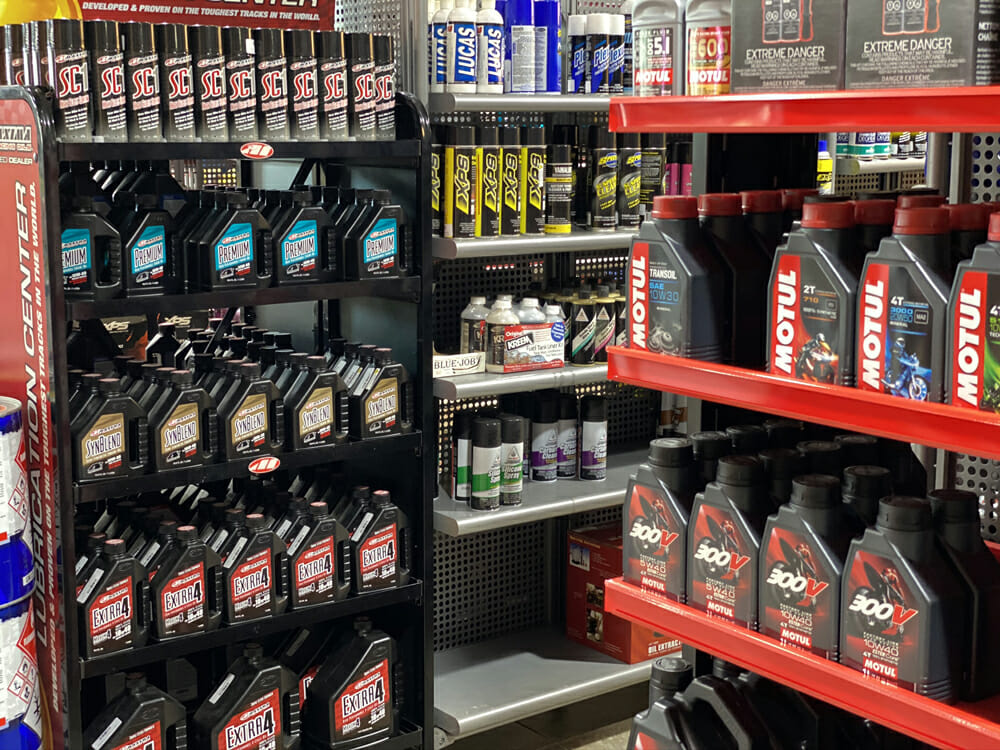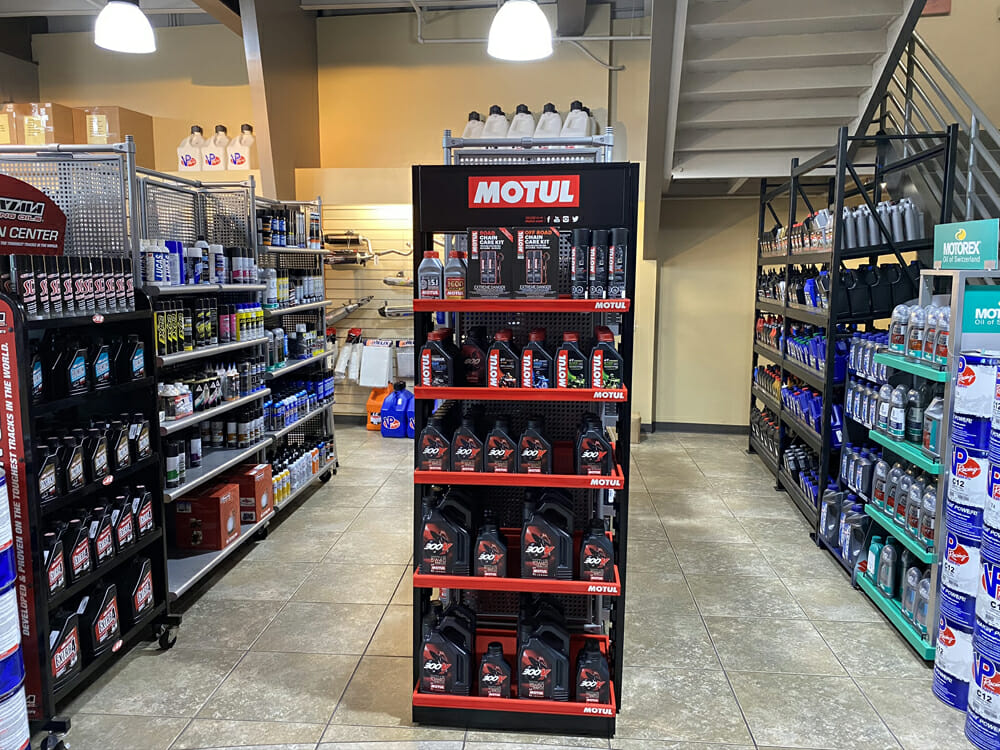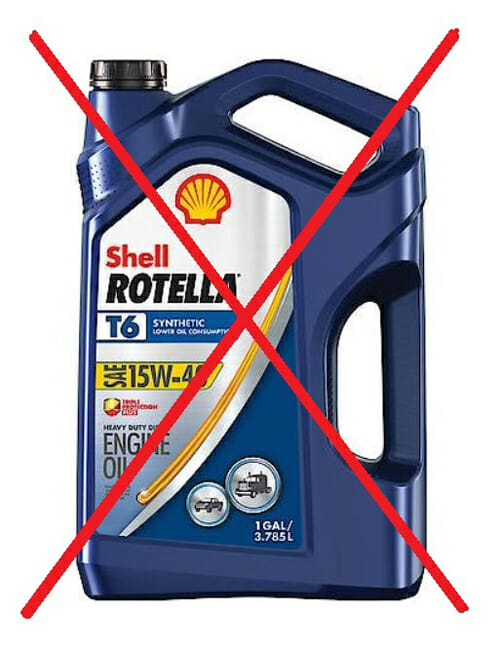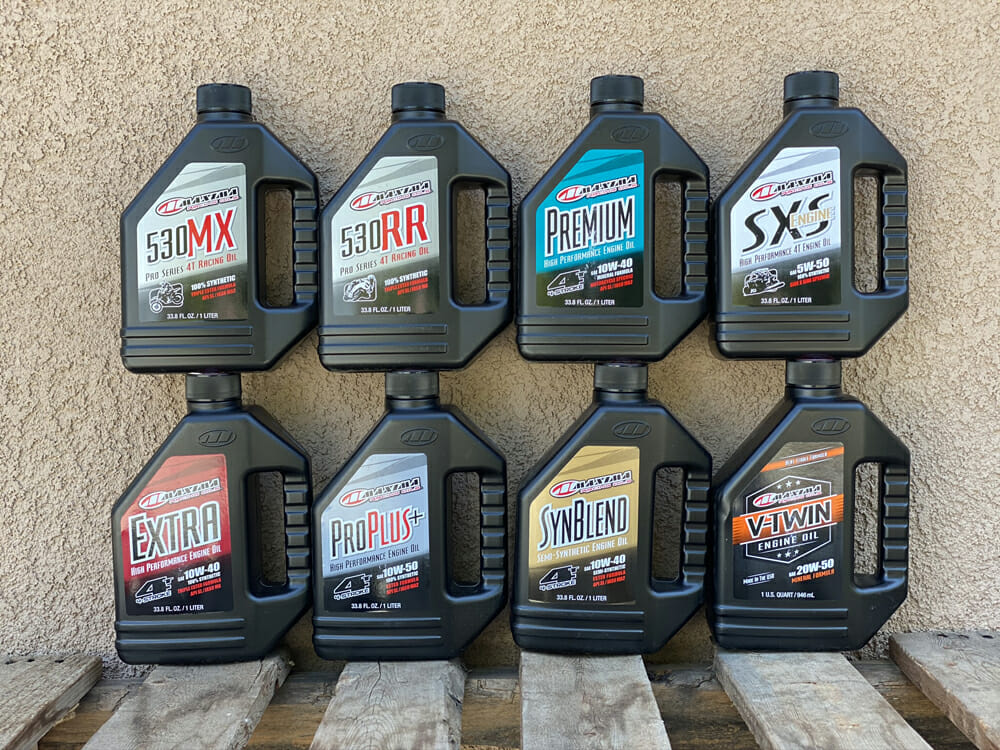Motorcycle Oil Selection and Guidelines
A few basic steps can help you avoid expensive engine failures.

The correct oil is critical to the performance and longevity of your motorcycle engine. Whether you are new to riding or a seasoned veteran, you likely have questions: Is it necessary to buy “motorcycle specific” oil or is cheaper automotive oil just fine? I own a cruiser, sportbike and a motocross bike, do I need different oil for each? How often do I need to change my oil? Is it okay to mix different oil to top off my bike? To get answers for these questions, we reached out to representatives from two of the most popular oil brands: Maxima Racing Oil’s Mike Marcella and Motorex USA’s Pat Riley. This discussion is specific to four-stroke motorcycle engines as two-strokes have completely different oil needs.
Do I need to use “motorcycle-specific” oil?
The bottom line is, yes. You should use motorcycle-specific oil. Motorcycle engines have a completely different architecture than an automotive engine. Marcella spelled this out in detail: “The unique aspect of motorcycle architecture is that there is usually a common lubricant sump for the engine, wet clutch and transmission. In a normal automotive setup, there are specific fluids for each piece of hardware, housed in separate sumps where they will (hopefully) never comingle. These fluids include the engine oil, which only has to be concerned with the engine, an ATF or manual transmission fluid (or perhaps no fluid if a dry manual tranny) for the transmission and then gear oil for the rear end.
“A motorcycle engine oil used in common-sump architectures must do the duties of all these fluids at once, simultaneously meeting the performance demands of the engine, clutch and gearbox. This is a lot to ask of a single fluid, especially since the total quantity of engine oil available to lubricate these components is severely limited by space. Add in the fact that many of the performance requirements of the individual components are at odds with one another and you’re left with a unique and challenging problem that requires a tailor-made fluid to meet each requirement as optimally as possible, while minimizing any detriment to the aforementioned opposing demands.”

Riley echoed this with a few other important points. “Passenger-car motor oil (PCMO) and motorcycle oil are similar from a base-oil standpoint but very different when it comes to additives. PCMO is not formulated for use in vehicles with a ‘wet’ clutch, found in nearly every motorcycle engine. Motorcycle oils utilize ‘friction additives’ to enable the motorcycle’s metal and fiber clutch discs to ‘grip’ each other, allowing for the controlled transfer of power from crank to transmission. Look for oils with true JASO certifications. Without ‘friction additives’ a motorcycle’s wet clutch will not ‘lock up’ and will continuously slip under load.”
To finish off this point about using the proper oil for the application, Marcella pointed out that, “I work for Maxima and I don’t use Maxima in any of our cars. I use the oils that the manufacturer recommends.” A high-end motorcycle racing oil is not going to be better for your car and the opposite is true.
How about Shell Rotella? This seems to be a popular choice for four-stroke motorcycles, and it is less expensive than most motorcycle oils.
If you search online discussions regarding motorcycle oils, you will likely find a lot of people recommending Shell Rotella. This is a product that was designed for diesel truck and automotive engines, which create a lot of soot and contaminants in the oil. Diesel engines typically have long intervals between oil changes as well, so Rotella includes a lot of detergents and additives to combat these issues that are specific to that type of engine. Those properties may be good for the clutch and some internal parts on a motorcycle but will typically result in some reduction in power, the opposite of many online claims.

Some people say that is okay since they want longevity over power but in practical use, it does seem to have an opposite effect. According to Alexander Smith, son of the legendary Malcolm Smith and general manager of Malcolm Smith Motorsports, “When we have a motor failure with one of the bikes in our service department or customer bikes on our regular Baja rides, 90 percent of the time they are using Rotella.” Rotella does not meet the manufacturer guidelines for motorcycles (so you could have warranty issues if you have a mechanical failure) and this real-world info from a multi-line dealership is enough for us to recommend using motorcycle specific oils and not Rotella.
Once you choose a brand of motorcycle oil, how do you select the best oil among the various options; synthetic, semi synthetic, ester, etc., and is it worth it to buy the more premium options?
Both Riley and Marcella pointed out that your first step is to check the owner’s manual for your bike. The manufacturers designate specific oil guidelines for each bike. Not using an oil that meets those guidelines will likely void your warranty but more importantly, the incorrect oil will likely negatively impact performance or the wear of your internal engine parts.
The owner’s manual will sometimes suggest their house or partner brand, but they will not require a specific brand (they are not allowed, by law, to specify a brand) but usually list a specific viscosity grade, or a selection of viscosity grades based on ambient temperatures, a minimum level of quality (API SL/JASO MA, for example) and sometimes a designation of base oil type (mineral, semi-synthetic or full-synthetic). Especially while your bike is under warranty, they both suggest sticking strictly to oils that meet those guidelines. If your bike is past the warranty period, it is still good to stick with those manufacturer recommendations since they designed the motor and know the specific needs. If the manufacturer specifically recommends petroleum-based oil, use that as some internal seals require that to “swell” in size and work properly.
If the motorcycle manufacturer does not specify mineral, synthetic, or semi-synthetic, it is open to you to choose. Generally, a synthetic oil will have a longer life than a mineral-based oil.
When it comes to the viscosity ratings, again it is best to stick with the manufacturer recommendations, but in a pinch, it is the second number or “summer” rating that is most critical since that is the typical operating temperature. So, if the manufacturer recommended oil is a 10W-50, you could use a 15W-50 as that first “W” number is most critical at startup in cold temperatures.
Specifically, for the Maxima line, Marcella provided this example: “If no composition specifics are given in the manual, then the user can default to their riding style and expectations as to which oil to use. If the manual only specifies a 10W-40 meeting JASO MA, for example, the user could choose mineral Premium 10W-40, semi-synthetic Syn Blend 10W-40, full-syn Pro Plus 10W-40 or the full-syn, pure race oil Extra 10W-40. Premium is probably sufficient for most riding under this scenario, but if the user wants a little additional oil durability, Syn Blend would be a good choice. If they run the bike hard, frequent the track, and want the longevity of a synthetic, Pro Plus would be more ideal. If they strictly race the bike and rebuild the engine frequently, Extra would be the best choice to get that slight competitive edge.”

Motorex’s Riley provided this example for choosing among their various lines of oils. “This is a ‘pay now or pay later question.’ For example, a KTM 350 S-XF owner’s manual specifies 10-hour service intervals but only if you run a full PAO & double ester-based engine oil (Cross Power 4T 10W50 is the full PAO & double ester-based oil in the Motorex line). PAO is derived from natural-gas molecules and, together with esters, handles heat much better than petroleum derived base oils. If you ride your bike for 40 hours, with the recommended 10-hour service interval, one liter of oil at $19.50 + the oil filter (about $8) equals $27.50 times four oil changes for a total of $110. If you use the less expensive Group 3 based oil, your recommended service interval goes down to four hours, so the $15 oil plus filter equals $23 times 10 oil changes for a total cost of $230. And in the extreme case, a Group 2 (mineral) based oil cost only $5 per liter plus the filter of $8, but the recommended service interval drops to just one hour, so it will cost just $13 per oil change but with 40 changes over 40 hours, your total cost is $520, not to mention the time and disposal of a lot more oil. Do your motorcycle, your wallet, and the environment a favor by using the highest-quality engine oil available to you.”
If you just need to top off your bike between oil changes, is it critical to use the same oil that you used for the last oil change?
It is best to use the same oil if possible, but if you are not positive about what you used or if you don’t have that same oil but have something similar, it will not hurt to mix oils. It should be the recommended viscosity but will mix even if it is not the same. This is true even for mixing synthetic and petroleum-based oil. It is better to have the proper amount of oil than be concerned about having the exact same oil.
In Conclusion
You should definitely use the specific motorcycle rated oil recommended in your owner’s manual and the more premium, synthetic options available for the various oil brands are likely worth the money due to the longer service intervals necessary (unless your owner’s manual specifically recommends petroleum-based oil). And if you need to top it off, it is ideal to use the same oil brand/viscosity/type of oil, but if you don’t have that, it is okay to use other motorcycle oils although that should be the same viscosity. And we didn’t mention this above, but changing the oil-based on the recommended operating hours in the owner’s manual is also very important and cheap insurance against serious failures. And if you run your bike harder or in extreme conditions, it is also best to change it sooner than the recommendations. CN
Click here to read Motorcycle Oil Selection and Guidelines in the Cycle News Digital Edition Magazine.
Click here for more Motorcycle How-To Articles on Cycle News.
"correct" - Google News
May 17, 2020 at 08:00PM
https://ift.tt/2yWmhul
How To Select The Correct Motorcycle Oil - Cycle News
"correct" - Google News
https://ift.tt/3d10rUK
https://ift.tt/35qAk7d
Bagikan Berita Ini














0 Response to "How To Select The Correct Motorcycle Oil - Cycle News"
Post a Comment